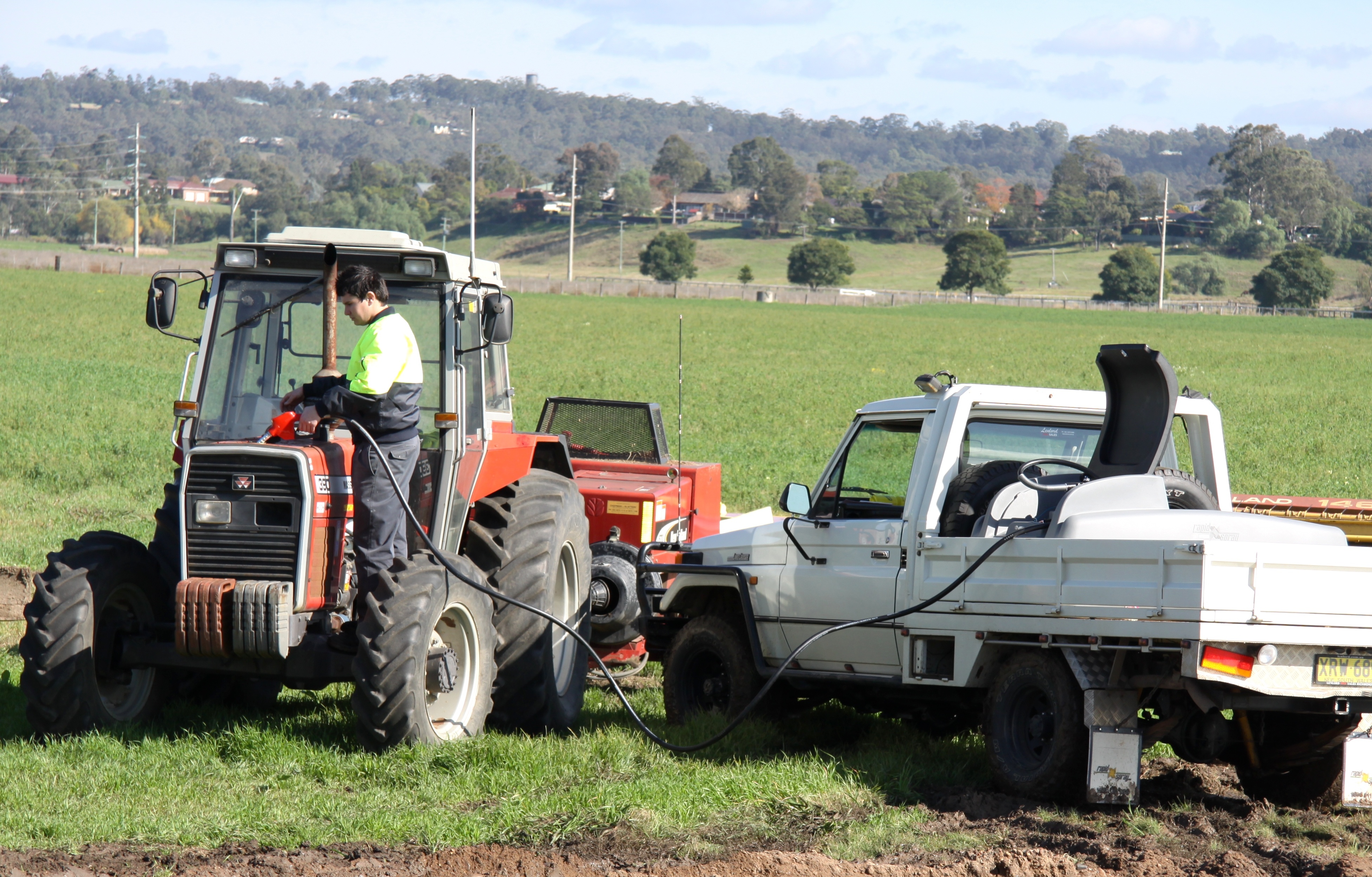Whether it is farmers, construction workers, miners, council workers or even that weekend 4X4 trip away, portable diesel refuelling units have become almost a standard item on the back of utes across Australia. They are appealing not only for their convenience for onsite diesel refuelling all kinds of machinery but also for their simple operation.
However, there are a few things that owners out there may not know about their units. So today we are going through some of the things that we should all know before using a diesel refuelling tank.
The earthing lead
Yes, that little blue wire that comes with the unit that no one takes any notice of, however it plays an important role. It earths your unit - making sure that there is no static electricity build up. Most service stations require you to connect it to the earth point while filling up your diesel unit. Safety first.
You should also connect the wire to the chassis or other metal component on the vehicle you are filling while using your diesel unit to refill your machinery.
 The earthing wire attached to reduce static build-up.
The earthing wire attached to reduce static build-up.
Running Pump Dry
12 Volt diesel pumps are rotor and vane pumps and they don’t do very well running dry because of the fact that they rely on diesel to lubricate the pump. The rotor spinning rapidly heats up and causes more and more friction, putting strain on the motor until it eventually burns out. If your pump burns out due to running it dry, not only does it set you back on your job, but it isn’t covered by warranty either.
-175093-edited.jpg?width=640&name=Genius%20Diesel_Fluid%20Pump%20(3)-175093-edited.jpg) Fluid pump on Genius Diesel Unit
Fluid pump on Genius Diesel Unit
Air Locks in your nozzle
This is a common problem in auto shutoff nozzles if air gets sucked into the line somehow. IF your tank is full and your pump is running but nothing is coming out of the nozzle, then odds are on that you have an air lock in the nozzle.
There is a quick fix for this. You can disconnect the nozzle from the delivery hose using a shifter, aim the hose back into the fill point of your tank, and turn the pump on. If fuel is going through the hose now, then reattach the gun and aim it back into the tank and turn the pump on and happy days.
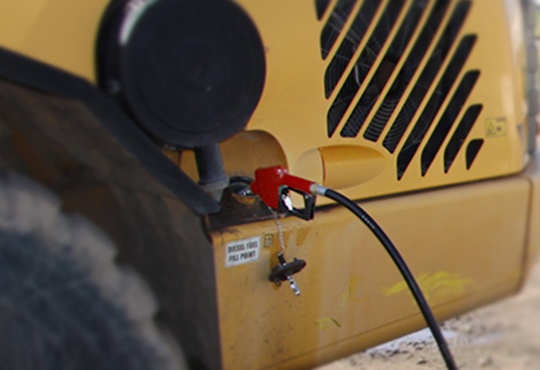
Allowing the pump to bypass for too long
Running in bypass can have a similar effect to running the pump dry but it happens much slower. Basically, if your pump is running but you aren’t refueling, then a small amount of fuel is being spun around the pump head at high speed. This will eventually heat up the diesel in the pump. It loses its oily lubricant like effect once hot and the pump begins to suffer from higher friction that will eventually burn the motor out on the pump.
Rapid Spray recommends that you don’t run the pump in bypass mode for any longer than three minutes. Any longer can cause damage to the pump and void your warranty.
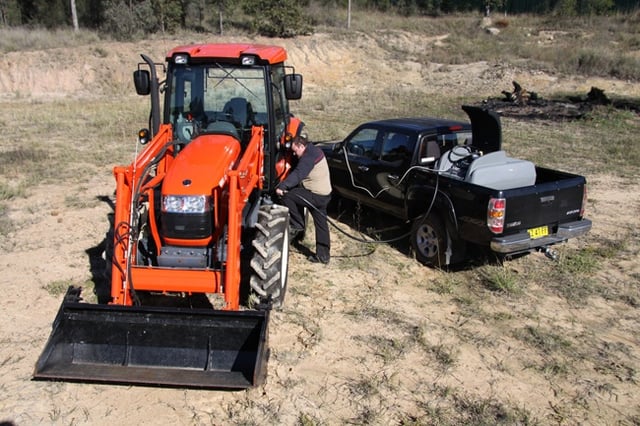
Proper size pump for the job
Like with spraying, you need to pick the right pump for the right job. If your filling up massive tanks, then a 40L/min pump is going to take forever and when it comes to refueling, time is money.
On the other hand, there is such a thing as too big. Or more specifically when your delivery and suction lines are too small or too long for your pump. Pre-made Rapid Spray diesel units are fitted with the correct size hoses already but if you are making your own unit or replacing your pump with something bigger, then hose diameter needs to be considered. As a rule of thumb, pumps up to 45L/min should be using ¾” delivery hose while pumps large (60L/min +) should pump through 1” hose. Any smaller and you risk burning out your pump as it is pushing more fuel out than the hose can handle. Hoses shouldn't be longer than 4-6m for a 40-45L/min pump or 6-8m for a 60-80L/min pump. If you are considering extending your hose length, think about increasing the diameter to reduce the strain on the pump.
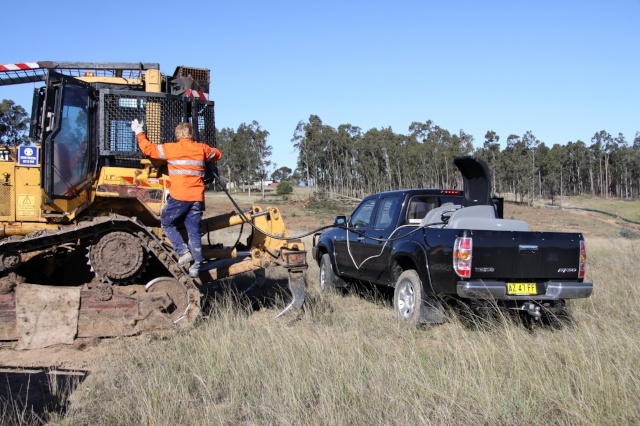
When 12V just won’t cut it
There are some contractors out there that are pumping out thousands of litres every day. As most 12 volt diesel pumps only having a working cycle of 30 mins and are designed for intermittent use, these poor little pumps aren’t going to be able to handle that kind of punishment over an extended period. It’s time to go bigger.
Rapid Spray offers two types of pumps for the big boys. A 1” Petrol powered 120L/min diesel pump powered by a Honda GX35, or a 2” FireChief pump with upgraded seals to handle diesel and a whopping 490L/min open flow. Not only do they have more powerful petrol powered motors, but they also are centrifugal type pumps which can come equipped with full bypass systems that go back to the tank. All of this makes for a versatile and durable industrial grade refuelling unit.
And there you have it! You are now equipped with some knowledge on the diesel refuelling tanks to avoid some costly downtime for your business or that weekend getaway!
If you liked this article or have a question, feel free to leave a comment below to let us know how we’re doing and we will get back to you ASAP!
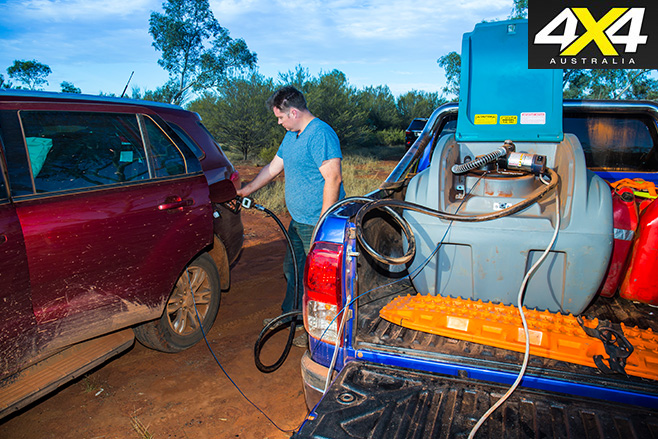 Image courtesy of 4X4 Australia/Which Car Product Test: https://www.whichcar.com.au/gear/rapid-spray-diesel-tank-product-test
Image courtesy of 4X4 Australia/Which Car Product Test: https://www.whichcar.com.au/gear/rapid-spray-diesel-tank-product-test


